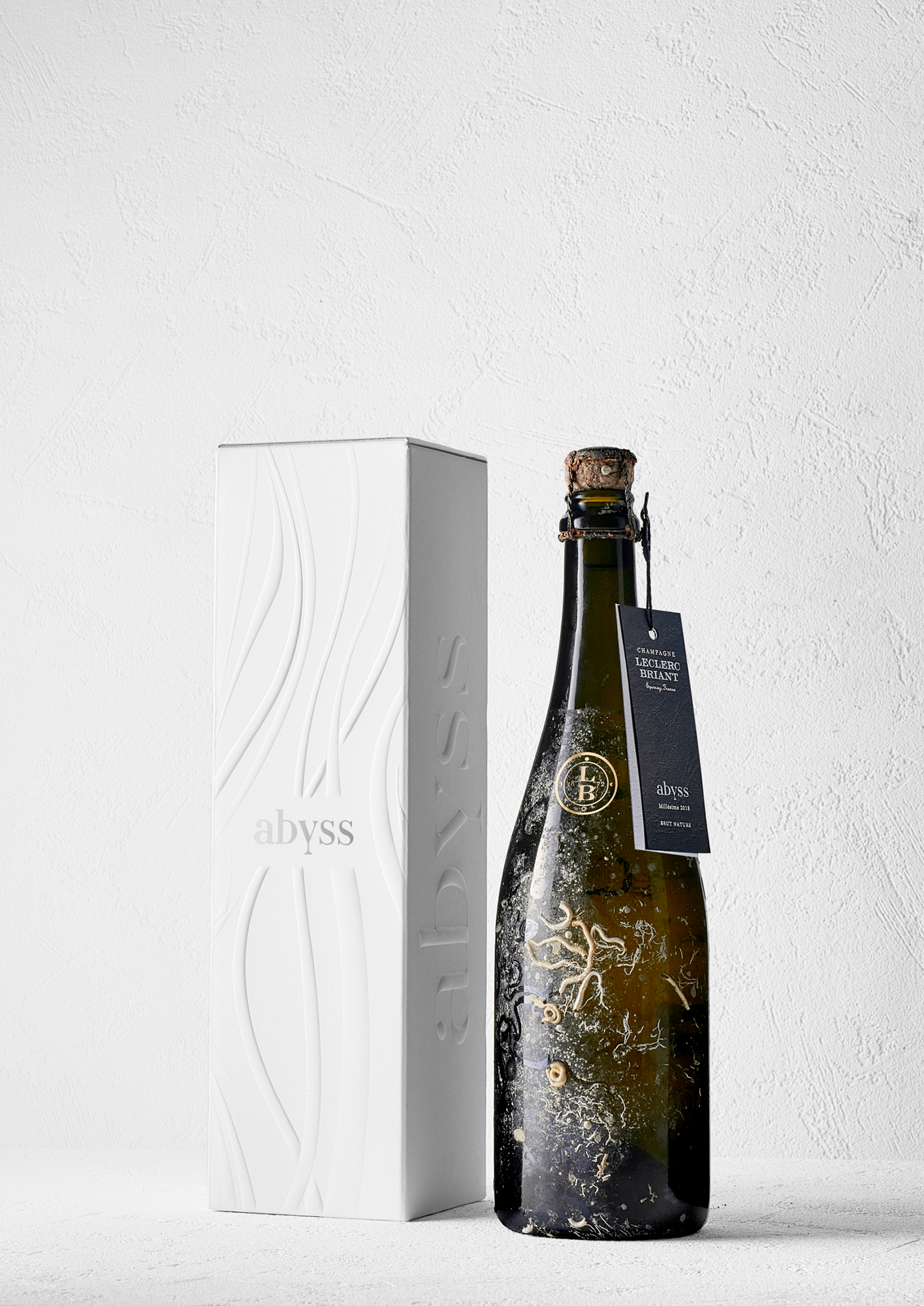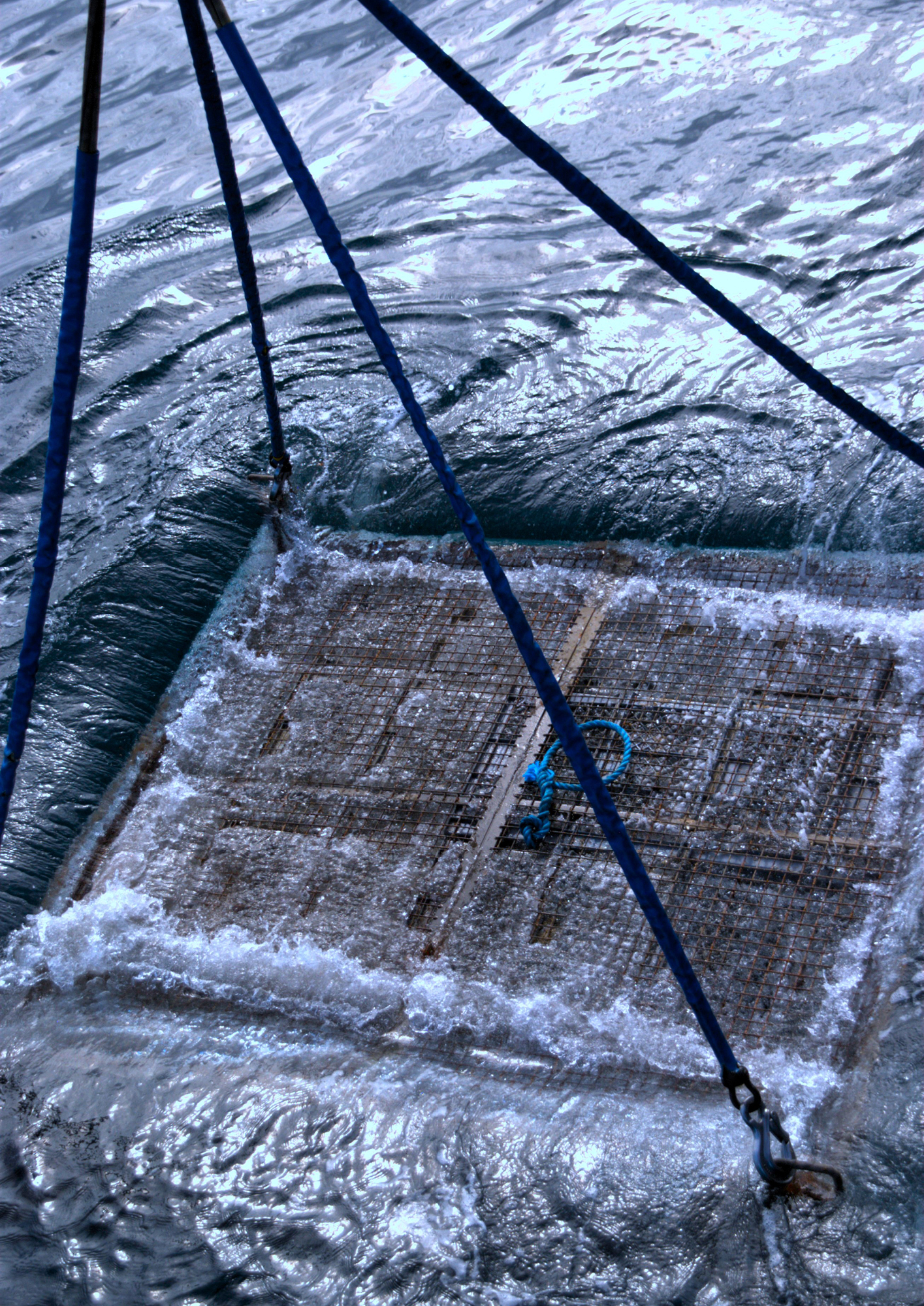WORDS
Douglas Blyde
It was a decade ago that Brummell first dove into the uncharted waters of sea-aged wine. The diving platform was a former Soho brothel, previously Karl Marx’s retreat during the composition of Das Kapital, but now known as the restaurant Quo Vadis. Guests, including your correspondent, were presented with a face-off between two bottles of 1997 Méthode Ancienne Cabernet Sauvignon from South Africa’s Springfield Estate. One had spent years nestled in the ocean’s embrace, barnacle-encrusted and steeped in the briny depths, while its sibling had matured on terra firma, as tradition would dictate. A challenge was laid down to our palates – and what followed was nothing short of revelatory.
Jeanette Bruwer, a dentist turned visionary winemaker, narrated this audacious experiment to tame her cabernet’s obstinately bold tannins. In a fit of curiosity, 600 bottles were plunged into a galvanised cage and submerged off the treacherous coast of Cape Agulhas – a graveyard for ships at Africa’s southernmost point, where the relentless currents of the Roaring Forties collide. ‘My brother Abrie and I fished these waters as children,’ Jeanette recalled, hence it seemed only natural to send the wine into the deep. What was intended as a six-month stint became a three-and-a-half-year odyssey, as the ocean held the bottles in a watery limbo. Upon their eventual retrieval, the wine, now lighter in colour, and silkier on the palate, stood in stark contrast to its sturdy land-aged counterpart – a triumph of nature’s mysterious hand.
Fast forward to today, and the fascination with subaquatic wine-ageing has only deepened. Recently, at an exuberant sommelier gathering in the thankfully soundproofed private room at Sparrow Italia Mayfair, glasses were filled with Quinta do Brejinho’s Vinho Monovarietal do Atlântico 2019, handpicked by Emanuel Pesqueira, the former wine maestro at Gordon Ramsay’s empire. An avid diver, Pesqueira recounted his first brush with Customs, bringing a shell-encrusted bottle with a not entirely charming marine smell back into the UK. Now, that very wine forms the heart of the “Underwater” pairing flight at Gordon Ramsay’s Michelin-starred 1890 at The Savoy, showcasing Portuguese wines aged in the Atlantic’s embrace, between 10 and 50 metres below the surface.
Atypical hints of iodine and white rice crept from the glass of Gewürztraminer from Setúbal’s Marina de Sines, taking their time to emerge, like a flower unfurling at dawn. ‘It’s like a tulip,’ said Pesqueira. ‘Give it time, and it’ll bloom.’
Submerging wine isn’t just for theatrics. The ocean offers a haven for wine, with cool, stable temperatures ideal for slow ageing, high pressure which helps maintain effervescence in sparkling wines, and a respite from oxygen and light to retain freshness. The sea’s gentle currents work their magic, mellowing tannins and creating a smoother, more integrated profile. And for winemakers, ocean storage comes gratis – albeit with risks of saltwater intrusion, costly retrievals and the ever-present threat of opportunistic pirates.
For consumers, the allure is undeniable: the thrill of discovering a wine aged in such unconventional surroundings is akin to salvaging treasure from a shipwreck, a liquid chronicle of its time beneath the waves.

Another aquatic adventure comes courtesy of Nick Baker, the mastermind behind The Finest Bubble – playfully dubbed London’s fourth emergency service for its two-hour champagne deliveries. At his headquarters, adorned with works from his days as a photographer, he recently opened three Leclerc Briant Abyss Brut Zero bottles, which had spent time 60 metres below la mer in Brittany’s Bay of Stiff. These biodynamic wonders were exercises in precision, with the 2018 Abyss rosé standing out for its airy finesse and crystalline fruit. ‘Hervé’s got the planets in perfect alignment,’ Baker mused, referring to Hervé Jestin, the visionary winemaker whose philosophies transcend mere terroir.
Jestin’s esoteric practices extend to his Épernay winery, where moon-soaked stones rest in vats, and chardonnay ferments in barrels lined with 24-karat gold – naturally, for its supposed enhancement of solar resonance during fermentation.

Closer to home, you’ll find Mauro Colagreco’s restaurant at Raffles London in The OWO, which boasts 60 Below by Exton Park – England’s first sea-aged sparkling wine. A portion of Exton Park’s 2014 Blanc de Blancs spent time submerged off Brittany’s coast, in an entente cordiale of English terroir meeting French waters. Wine director, Vincenzo Arnese invites guests to compare the sea-aged cuvée with its land-aged counterpart. In a twist, 60 Below was legally permitted to remain on its lees during submersion, unlike its champagne counterparts – a bold step in the burgeoning world of English sparkling wine. Winemaker Corinne Seely calls it ‘the most thrilling release of English wine yet’.
Arnese adds, ‘The journey between a wine aged in the ocean’s abyss and one on solid ground mirrors the grandeur of The OWO itself – a nod to an age of exploration and discovery.’
As Marx himself once observed, ‘There is no royal road to science.’ For Bruwer, Pesqueira, Jestin, Baker and Seely, the same could be said of wine. Whether aged by the stars, the sea or the daring hand of a winemaker, the results of these ventures into the unknown speak for themselves – and to our unending curiosity.





